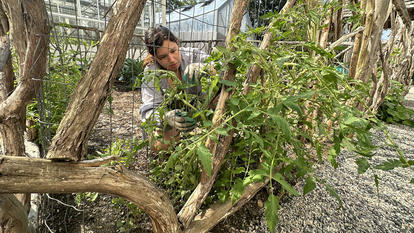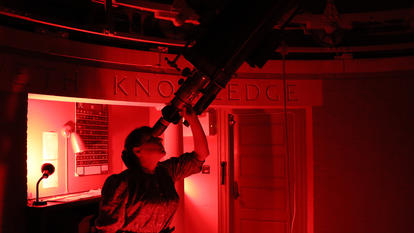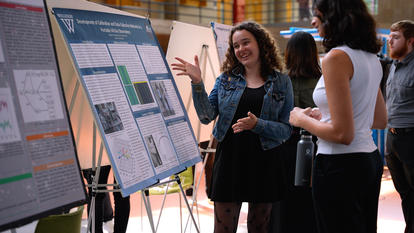Paulson Initiative’s Winterfest 2018 Connects Students with Wellesley’s Landscape
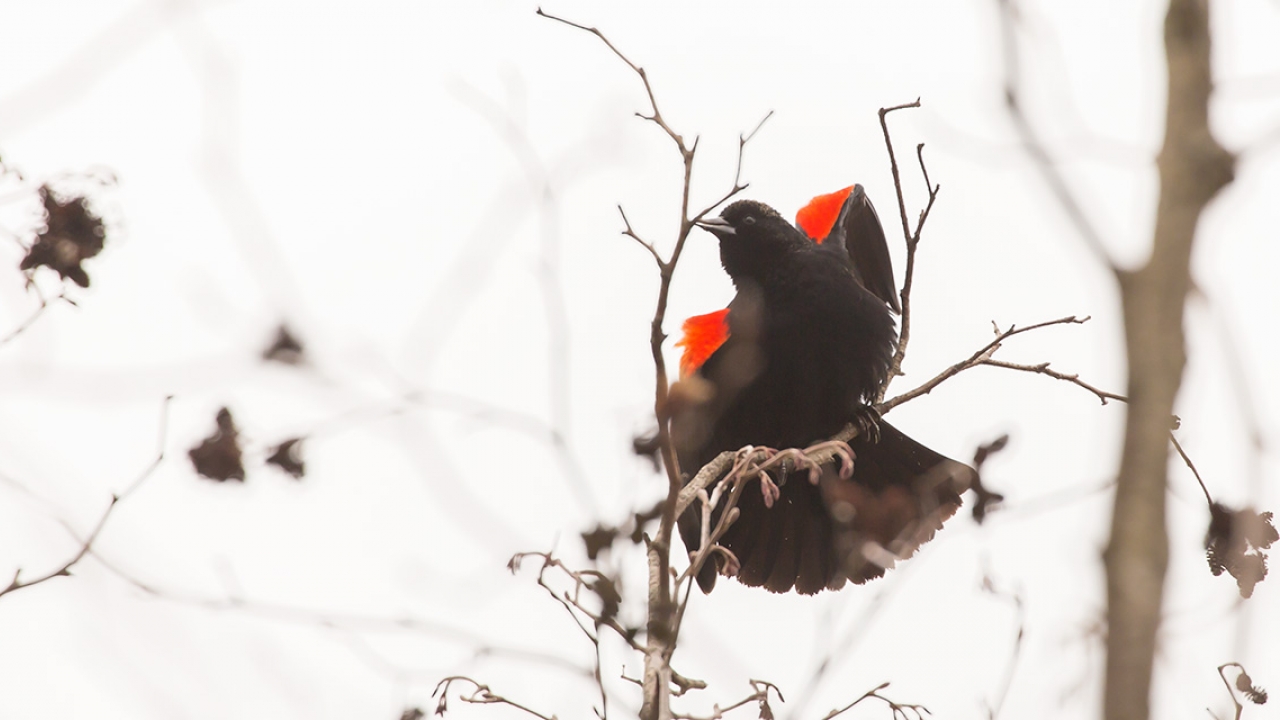
Nicholas L. Rodenhouse, professor emeritus of biological sciences, began one morning last week with a bird-watching walk that started at the Lulu lawn fire pit. He proceeded to the paths and hilly terrain near a wetland area with about a dozen students, each carrying a pair of binoculars. Their goal was to find winter bird flocks as well as migratory species that might be returning to the campus from their winter habitats. One of the first birds to greet them landed on the limb of a tree alongside a path: a colorful red-winged blackbird.
The walk was one the events offered during the daylong Winterfest 2018, sponsored by the Paulson Ecology of Place Initiative, which also included a tree tour around the Botanic Gardens, a demonstration of fire-starting using only plants from the landscape, and an evening walk to locate owls and other nocturnal creatures.
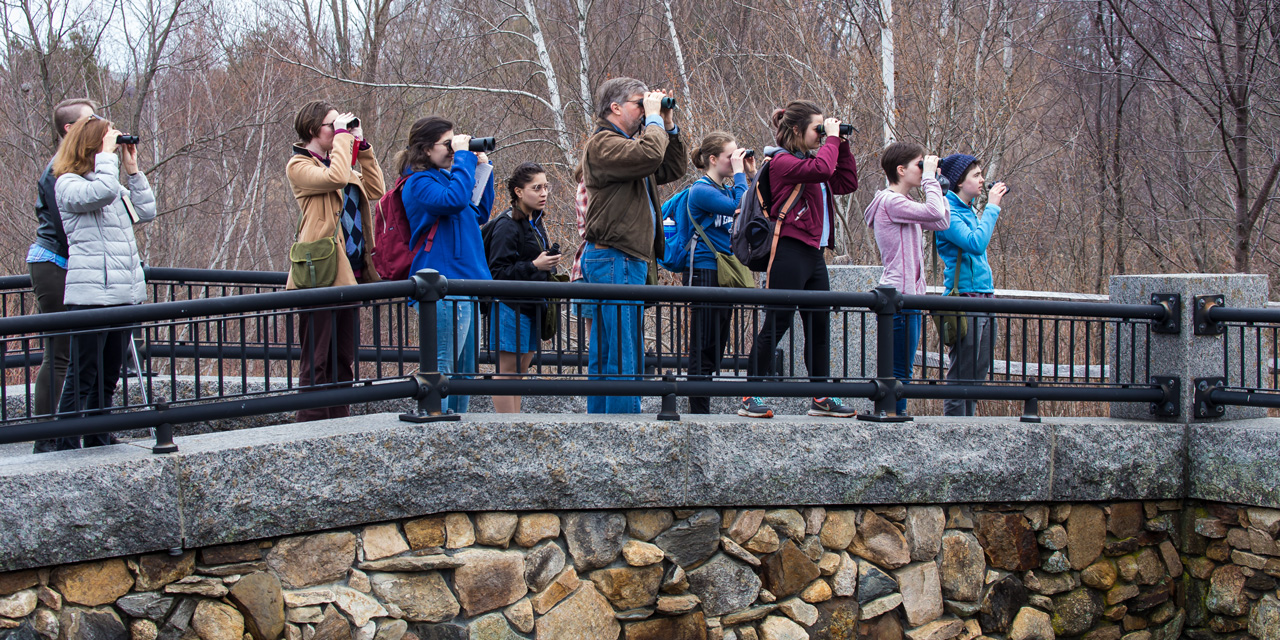
Photo: Nicholas Rodenhouse leads a group of students and faculty on a bird-watching walk around campus
Rodenhouse described the Wellesley campus to the group as “a very bird-rich landscape,” with at least 50 species during migration and summer. He explained several characteristics of birds that do not migrate in the winter—they generally form into flocks for safety, for example. “By forming with other birds in a large group, they reduce the probability of being eaten by a predator, like a hawk,” he said. “There’s protection in the crowd.”
As Rodenhouse spoke, a red-tailed hawk swooped and circled over the group with is wings spread wide, then disappeared behind a stand of trees near Lake Waban.
As they continued their walk, students scanned nearby treetops when they heard various songbirds flitting from branch to branch, emitting a chorus of chirps and calls. Rodenhouse identified woodpeckers, nuthatches, geese, cardinals, and grackles, to name a few. A bevy of swans skimmed across Lake Waban. At the edge of the lake, the bird-watchers came upon an active beaver lodge. In Paintshop Pond, which flows into Waban, a male ring-necked duck paddled, preening and flapping his wings in a mating ritual.
Suzanne Langridge, director of the Paulson Initiative, came along for the walk. “Experiencing the campus this way creates a distinct sense of place about Wellesley,” said Langridge. “By connecting students with this rich environment—with the birds, trees, the lake, the ponds, and the wildlife—students become more engaged in and excited about the natural environment and their campus.”
Roz Herling ’18 took the walk as well. She said she had never previously thought to take a stroll around Paintshop Pond. “I’ve never been out there,” she said. “I knew it was over there but never took a walk over there until today. There’s a lot to see. Often, when I’m going to class or to my room, I might see a bird or hear a bird, but that’s as far as it goes. It is surprising how much there is here.”
Photo: A male red-winged black bird displays its wings to establish its territory during a bird-watching walk during Winterfest 2018.

